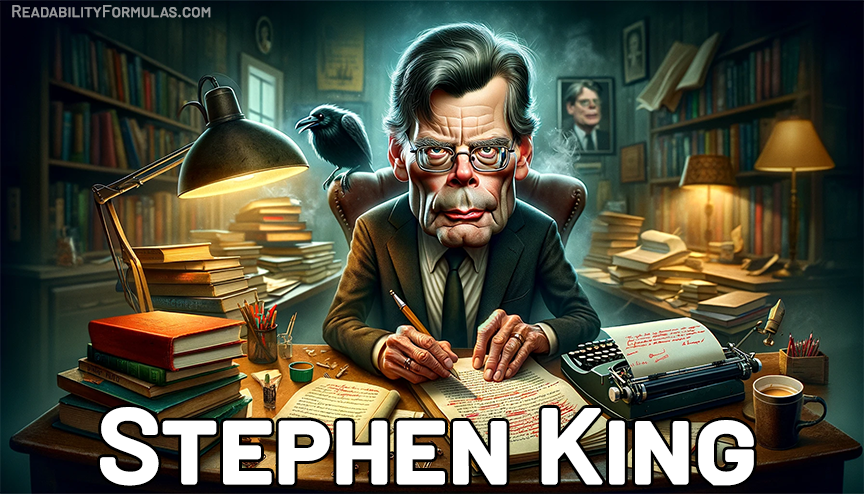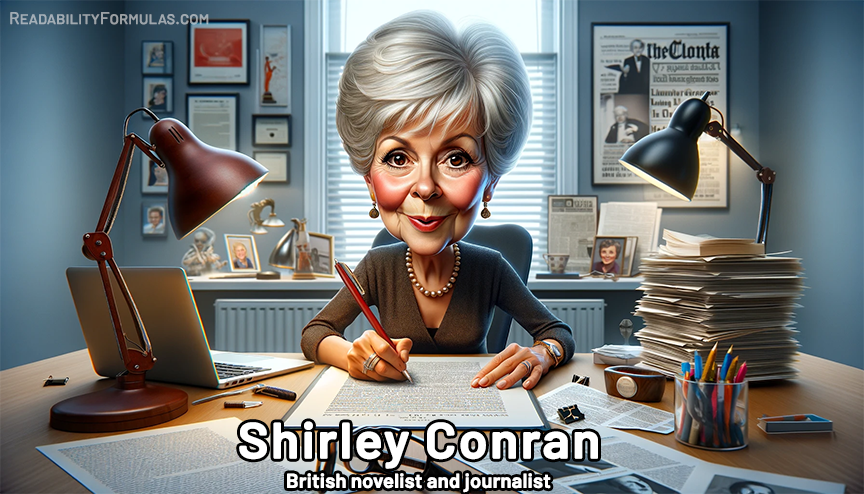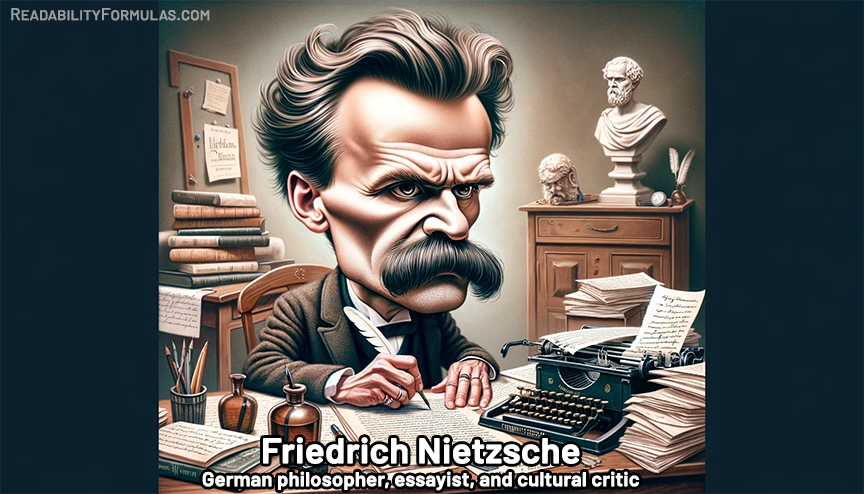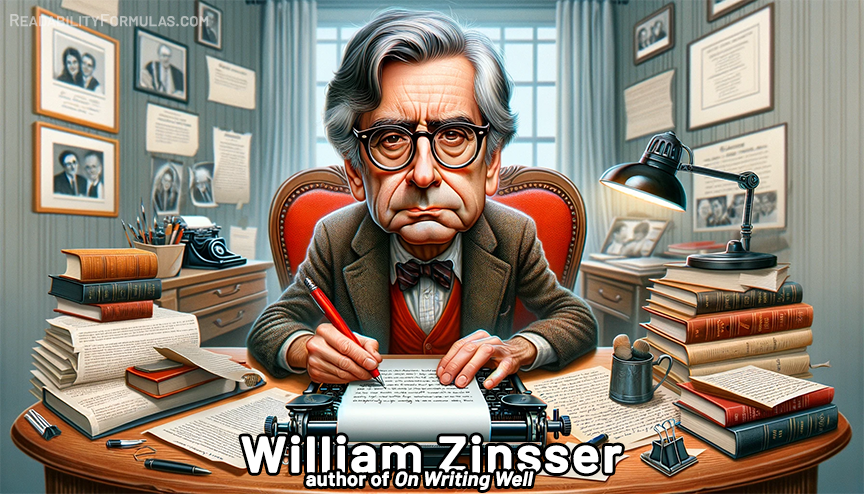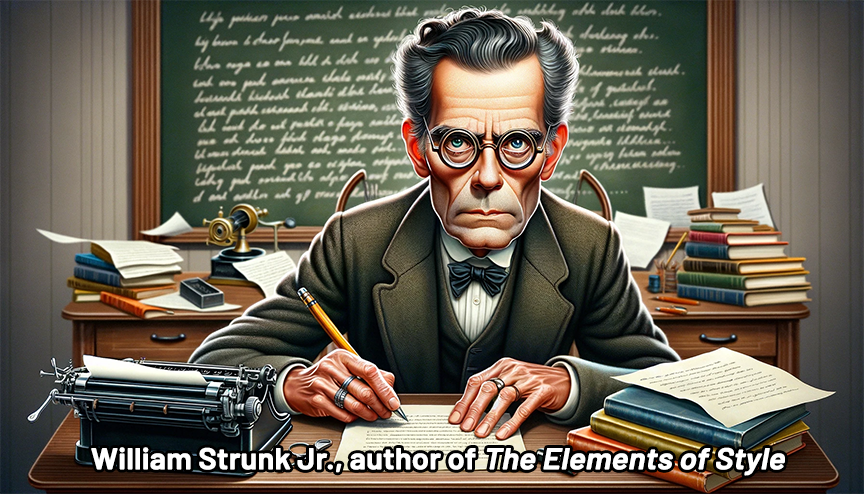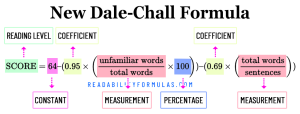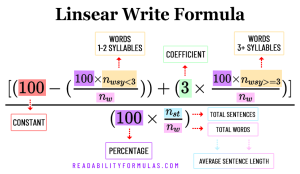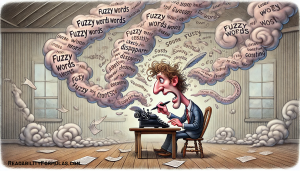
A young entrepreneur, Ryan, is seated at a large office desk, his fingers poised above the keyboard. He’s been tasked with composing an important email to his team, one that could redefine their project’s course. Ryan starts with complex sentences, juggling industry jargon with intricate phrases. As he rereads his draft, he realizes the message is lost in a maze of complexity. With a deep breath, he starts anew, this time embracing simplicity. Each word is chosen with care, each sentence crafted for clarity. As he hits “Send,” he understands the true art of his craft lies not in fancy language, but how he conveys his thoughts with clarity. In this moment, Ryan learns the power of simplicity in writing, transforming his approach to communication forever.
In the world of writing, clarity is king. For the message to ring true, the writer must master simplicity. This task, seemingly humble, is the cornerstone of effective communication.
William Zinsser, author of On Writing Well, revealed four basic elements that writers should master: clarity, brevity, simplicity, and humanity. Each element underscores a crucial aspect of crafting writing that resonates with readers:
Clarity: Writing should leave no room for ambiguity. Clear writing ensures readers can understand the message without confusion. Zinsser advocates for writers to eliminate unnecessary complexity so their ideas shine without obstruction.
Brevity: Every word in a piece of writing should earn its place. Brevity does not mean sacrificing depth or nuance but rather trimming excess to create focused, impactful content. This respect for the reader’s time and attention is a hallmark of professional writing.
Simplicity: Simplicity is not about dumbing down content but distilling it to its essence. Zinsser says simplicity improves accessibility—it makes complex topics approachable and engaging.
Humanity: Writing is, at its heart, a human endeavor. It should reflect the writer’s voice, warmth, and sincerity to connect with readers. Humanity transforms writing from “delivering information to readers” to “connecting meaningfully with readers.”
Zinsser’s advice reminds us that great writing—whether an email, article, or novel—starts with respecting the reader and delivering thoughtful and memorable content.
The Art of Simplicity
1. Speak Plainly, Please!
Write as you might speak to a friend, with short, clear sentences. Limit them to 20 words or so, using language familiar to the majority. Example: Instead of “Utilize this methodology,” say “Use this method.”
Stephen King (from On Writing: A Memoir of the Craft): “When you write a story, you’re telling yourself the story. When you rewrite, your main job is taking out all the things that are not the story.” King’s advice on rewriting to remove unnecessary parts aligns with the idea of using short, clear sentences, much like in a conversation with a friend.
2. Economy of Expression
Say what you mean and no more. Extraneous Long words confuse rather than clarify. Less, in this case, truly is more.
- Instead of “In order to assist you with your inquiry,” say “To help you.”
- Instead of: “Individuals possessing a lack of experience in this domain may encounter difficulties.” Use: “People new to this field may find it challenging.”
- Instead of: “At this point in time, we are unable to facilitate your request.” Use: “Right now, we can’t fulfill your request.”
- Instead of: “It is of utmost importance to ascertain the veracity of the information.” Use: “It’s vital to check if the information is true.”
- Instead of: “The juvenile canines require sustenance.” Use: “The puppies need food.”
- Instead of: “Performing an assessment of the financial fluctuations requires careful analysis.” Use: “Studying the changes in money takes careful thought.”
- Instead of: “Upon completion of the task at hand, a cessation of activities will ensue.” Use: “After finishing the task, we’ll stop working.”
- Instead of: “The utilization of sophisticated terminology often obfuscates the intended message.” Use: “Using big words often makes the message unclear.”
- Instead of: “The academic institution is situated in close proximity to my place of residence.” Use: “The school is near my home.”
“Writing is 1 percent inspiration, and 99 percent elimination.” —Shirley Conran, British novelist and journalist. Her advice captures the essence of editing down to the essentials, a key aspect of economical expression.
3. Invite the Eye
Use headings, bullets, and formatting to break the monotony of the text. These elements add rhythm and can make a document more inviting.
Example: Use bullet points to list features:
- Easy to read
- Visually appealing
- Organized
4. Avoid Complexity
Words with many syllables are barriers to simplicity. Choose simpler words, and the reader will thank you. Example: Instead of “Discombobulated,” use “Confused.”
“It is my ambition to say in ten sentences what others say in a whole book.“ —Friedrich Nietzsche, German philosopher, essayist, and cultural critic
5. Look to the Masters
Compare your work with esteemed texts aimed at the same audience. You can gain abundant wisdom from those who’ve succeeded before you. Idea: Compare your sales pitch to successful pitches from industry leaders.
6. Speak Directly
Engage with active voice. It’s as if you’re in conversation with the reader. Example: Use “You will see benefits” instead of “One will see benefits.”
“Look for the clutter in your writing and prune it ruthlessly. Be grateful for everything you can throw away.“ — William Zinsser, author of On Writing Well
7. Seek Feedback
A fresh eye can see what you might have missed. Don’t hesitate to ask for another’s opinion.
8. Remain True
Your message is your beacon. Follow it without fail. If writing about simplicity, don’t deviate into unrelated complexities.
9. Craft With Care
Pay attention to grammar and punctuation. They are the scaffolding upon which your writing stands. Use correct punctuation: “Let’s eat, Grandma!” vs. “Let’s eat Grandma!”
- “Let’s eat, Grandma!“: In this sentence, the comma after “eat” is used to be more direct. The writer suggests to their grandmother that it is time to eat. The comma separates the action (eating) from the person being spoken to (Grandma).
- “Let’s eat Grandma!“: Without the comma, the meaning changes dramatically. The writer suggests they should eat their grandmother, which is both humorous and grotesque. The missing comma makes “Grandma” the direct object of the verb “eat,” changing the context entirely.
10. Create a Flow
Sentences should lead naturally from one to the next, like stepping stones across a stream. Example: Link sentences like: “The sun set. Darkness fell, and the stars shone brightly.”
11. Embrace Metaphor and Simile
When used sparingly, these literary devices can visualize a point better than mere description. Example: “Her voice was like a melody” or “Life is a journey.”
12. Know When to End
A concise conclusion that resonates with the beginning can bring your piece full circle, satisfying your readers. Example: If writing about how important family is, end with a personal reflection on your own family.
“A sentence should contain no unnecessary words, a paragraph no unnecessary sentences, for the same reason that a drawing should have no unnecessary lines and a machine no unnecessary parts.“ —William Strunk Jr., author of The Elements of Style
In the pursuit of writing, one must balance substance and style. Simplicity will resonate with your readers. This is the art of writing in plain English, honed through practice and guided by these principles. It’s an art you can master.
Scott, Brian. “The Art of Simplicity: A Writer’s Guide.” ReadabilityFormulas.com, 9 Dec. 2024, https://readabilityformulas.com/the-art-of-simplicity-a-writers-guide/.


